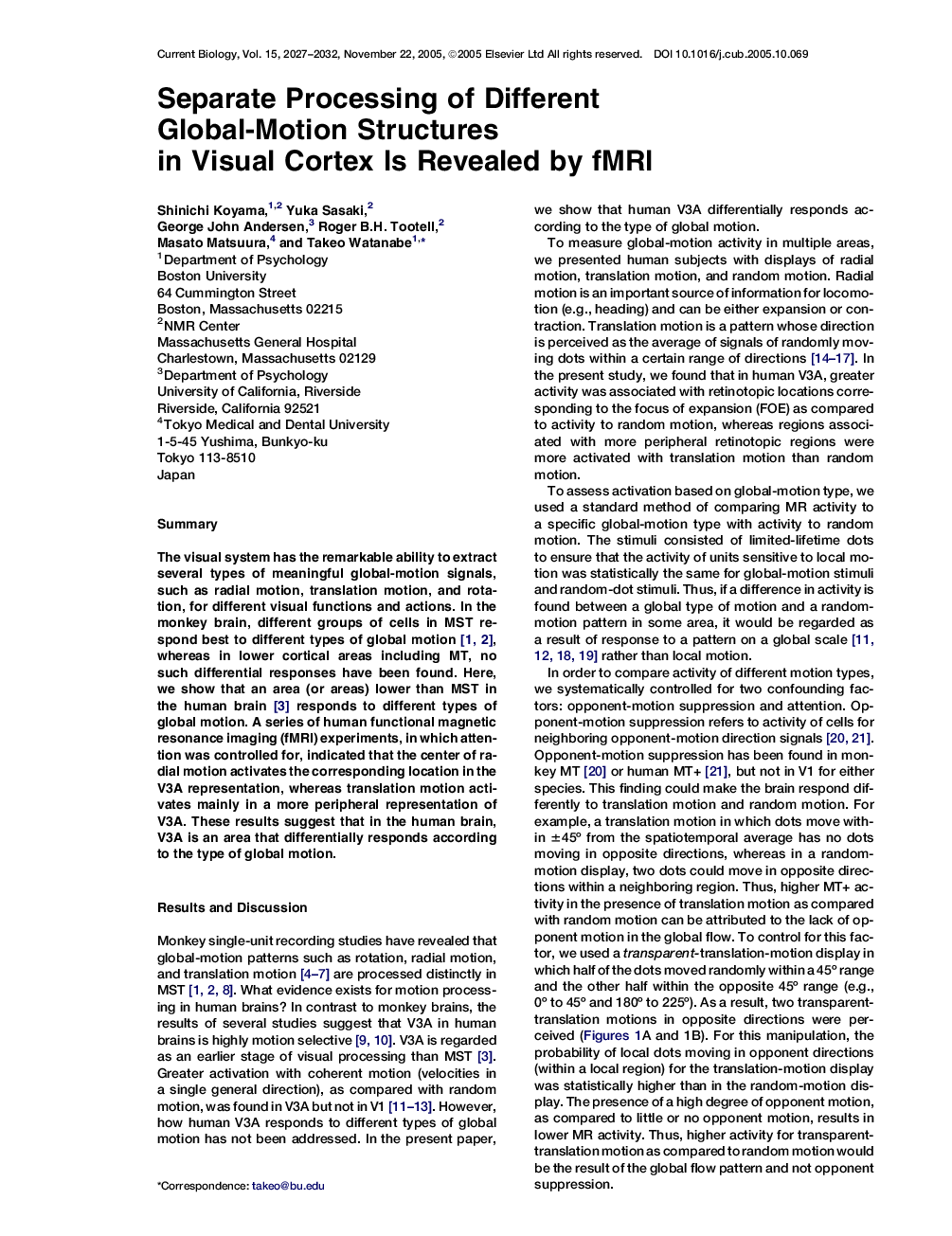| Article ID | Journal | Published Year | Pages | File Type |
|---|---|---|---|---|
| 2045581 | Current Biology | 2005 | 6 Pages |
SummaryThe visual system has the remarkable ability to extract several types of meaningful global-motion signals, such as radial motion, translation motion, and rotation, for different visual functions and actions. In the monkey brain, different groups of cells in MST respond best to different types of global motion 1 and 2, whereas in lower cortical areas including MT, no such differential responses have been found. Here, we show that an area (or areas) lower than MST in the human brain [3] responds to different types of global motion. A series of human functional magnetic resonance imaging (fMRI) experiments, in which attention was controlled for, indicated that the center of radial motion activates the corresponding location in the V3A representation, whereas translation motion activates mainly in a more peripheral representation of V3A. These results suggest that in the human brain, V3A is an area that differentially responds according to the type of global motion.
